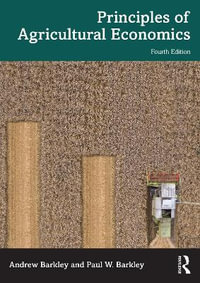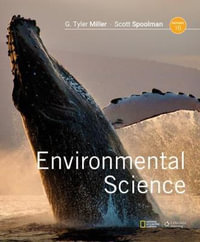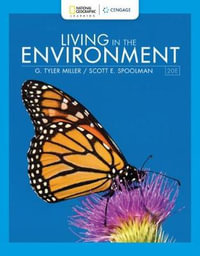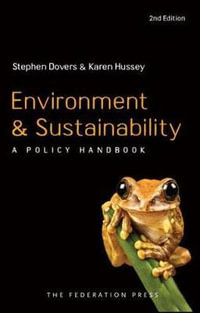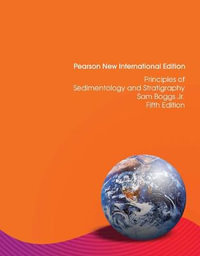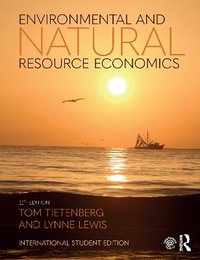| Preface | p. ix |
| Contributors | p. xi |
| Reviewers | p. xiii |
| Monitoring and Characterization of the Environment | |
| The Environment | p. 1 |
| Environmental Monitoring | p. 2 |
| Environmental Remediation and Restoration | p. 3 |
| Scales of Observation | p. 3 |
| Agencies | p. 5 |
| Current and Future Status of Environmental Monitoring | p. 7 |
| Purpose of this Textbook | p. 9 |
| References and Additional Reading | p. 9 |
| Sampling and Data Quality Objectives in Environmental Monitoring | |
| Environmental Characteristics | p. 12 |
| Representative Units | p. 13 |
| Sampling Locations | p. 14 |
| Types of Environmental Sampling | p. 16 |
| Sampling Plan | p. 17 |
| Analytical Data Quality Requirements | p. 18 |
| Quality Control Checks | p. 23 |
| Reporting Data | p. 24 |
| Units of Measure | p. 24 |
| Questions | p. 26 |
| References and Additional Readings | p. 27 |
| Statistics and Geostatistics in Environmental Monitoring | |
| Samples and Population | p. 30 |
| Random Variables | p. 31 |
| Frequency Distribution and the Probability Density Function | p. 31 |
| Sample Size and Confidence Intervals | p. 35 |
| Covariance and Correlation | p. 39 |
| Linear Regression | p. 39 |
| Interpolation and Spatial Distributions | p. 41 |
| Questions and Problems | p. 46 |
| References and Additional Reading | p. 47 |
| Automated Data Acquisition and Processing | |
| Measurement Concepts | p. 49 |
| Automated Measurement | p. 50 |
| Sensors and Transducers | p. 50 |
| The Data Acquisition System | p. 55 |
| Types of Data Acquisition Systems | p. 57 |
| Data Management and Quality Control | p. 59 |
| Questions | p. 67 |
| References and Additional Reading | p. 67 |
| Maps in Environmental Monitoring | |
| Principles of Mapping | p. 69 |
| Locational and Land-Partitioning Systems | p. 72 |
| Topographic Maps | p. 74 |
| Soil Survey Maps | p. 81 |
| Global Positioning System | p. 83 |
| Questions | p. 84 |
| References and Additional Reading | p. 84 |
| Geographic Information Systems and Their use for Environmental Monitoring | |
| Description of Geographic Information Systems | p. 86 |
| Geographic Information Systems Data | p. 88 |
| Thematic Data | p. 91 |
| Models of Real-World Problems with Geographic Information Systems | p. 93 |
| Geographic Information System Online Tools and Visualization | p. 96 |
| The Future: Geographic Information Systems as a Community Resource | p. 99 |
| Questions | p. 99 |
| References and Additional Reading | p. 100 |
| Soil and Vadose Zone Sampling | |
| Soil Sampling Strategies | p. 103 |
| Classic Soil Sampling | p. 103 |
| Soil Sampling in Agriculture | p. 104 |
| Vadose Zone Sampling for Pollution Characterization | p. 105 |
| Soil Samplers | p. 105 |
| Soil-Pore Water Sampling | p. 113 |
| Quality Control | p. 118 |
| Questions | p. 118 |
| References and Additional Reading | p. 119 |
| Groundwater Sampling | |
| Groundwater Sampling Objectives | p. 121 |
| Location of Monitor Wells | p. 122 |
| Well Construction | p. 124 |
| Design and Execution of Groundwater Sampling Programs | p. 132 |
| Questions | p. 138 |
| References and Additional Reading | p. 139 |
| Monitoring Surface Waters | |
| The Changing States of Water | p. 142 |
| Water Quality Parameters | p. 143 |
| Sampling the Water Environment | p. 148 |
| Sampling Techniques for Surface Waters | p. 151 |
| Water Sampling Equipment | p. 155 |
| Miscellaneous Field Methods | p. 156 |
| Quality Control in Field Measurements and Sampling | p. 157 |
| Questions | p. 160 |
| References and Additional Reading | p. 161 |
| Monitoring Near-Surface Air Quality | |
| Structure and Composition of the Atmosphere | p. 164 |
| Sources and Impacts of Air Pollution | p. 165 |
| History of Air Pollution Control | p. 171 |
| Air Quality and Emissions Standards | p. 171 |
| Sampling and Monitoring Considerations | p. 173 |
| Air Sampling | p. 175 |
| Direct Air Measurements | p. 179 |
| Questions | p. 180 |
| References and Additional Reading | p. 181 |
| Remote Sensing for Environmental Monitoring | |
| Physical Principles of Remote Sensing | p. 184 |
| Optical Properties of Earth Surface Materials | p. 185 |
| Remote Sensing at the Landscape Scale | p. 188 |
| Applications of Remote Sensing in Environmental Health and Toxicology | p. 202 |
| Questions | p. 205 |
| References and Additional Reading | p. 206 |
| Environmental Physical Properties and Processes | |
| Measuring Basic Soil Properties | p. 207 |
| Soil-Water Content | p. 211 |
| Measuring Hydraulic Conductivity | p. 219 |
| Measuring Hydraulic Heads | p. 226 |
| Measuring Flow Directions, Gradients, and Velocities | p. 230 |
| Questions | p. 237 |
| References and Additional Reading | p. 238 |
| Chemical Properties and Processes | |
| Soil Chemical Constituents | p. 242 |
| Soil Chemical Processes | p. 248 |
| Factors Controlling Soil Chemical Processes | p. 250 |
| Rates of Chemical Processes in the Soil Environment | p. 254 |
| Soil-Water Redox Potential and pH | p. 254 |
| Questions | p. 260 |
| References and Additional Reading | p. 260 |
| Environmental Microbial Properties and Processes | |
| Benefit of Environmental Microbes | p. 263 |
| What Are Microorganisms? | p. 264 |
| Microorganisms in Soil | p. 267 |
| Aquatic Environments | p. 269 |
| Sampling Procedures for Microbial Characterization | p. 269 |
| Sampling Methods for Surface Soils | p. 269 |
| Strategies and Methods for Water Sampling | p. 270 |
| Strategies and Methods for Air Sampling | p. 271 |
| Methods for Characterizing Microorganisms and Microbial Properties in Water and Soil | p. 273 |
| Application of Microorganisms for Toxicity Testing | p. 276 |
| Important Microbial Processes | p. 277 |
| State-of-the-Art Approaches for Monitoring Microbial Activities | p. 279 |
| Questions | p. 279 |
| References and Additional Reading | p. 280 |
| Physical Contaminants | |
| Naturally Occurring Particulates | p. 281 |
| Human-Made Particulates | p. 288 |
| Mechanisms and Control of Particulate Pollution | p. 289 |
| Questions | p. 296 |
| References and Additional Reading | p. 296 |
| Chemical Contaminants | |
| Types of Contaminants | p. 299 |
| Sources of Contaminants | p. 300 |
| Contaminant Transport and Fate | p. 308 |
| Questions | p. 312 |
| References and Additional Reading | p. 312 |
| Microbial Contaminants | |
| Environmentally Transmitted Pathogens | p. 313 |
| Concept of Indicator Organisms | p. 314 |
| Sample Processing and Storage | p. 323 |
| Processing Environmental Samples for Viruses | p. 323 |
| Processing Environmental Samples for Protozoan Parasites | p. 329 |
| Field Analysis | p. 330 |
| Questions | p. 332 |
| References and Additional Reading | p. 332 |
| Soil and Groundwater Remediation | |
| Superfund Process | p. 336 |
| Site Characterization | p. 337 |
| Remediation Technologies | p. 341 |
| Monitored Natural Attenuation | p. 352 |
| Questions | p. 356 |
| References and Additional Reading | p. 356 |
| Ecological Restoration | |
| Site Characterization | p. 358 |
| Site Restoration | p. 362 |
| Site Monitoring | p. 363 |
| Approaches to Ecosystem Restoration | p. 365 |
| Questions | p. 375 |
| References and Additional Reading | p. 375 |
| Risk Assessment and Environmental Regulations | |
| Risk Assessment | p. 377 |
| Process of Risk Assessment | p. 379 |
| Microbial Risk Assessment | p. 383 |
| Regulatory Overview | p. 386 |
| Questions | p. 391 |
| References and Additional Reading | p. 392 |
| Index | p. 393 |
| Table of Contents provided by Rittenhouse. All Rights Reserved. |



